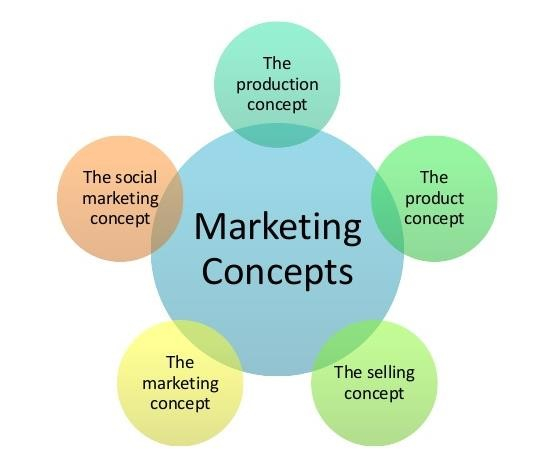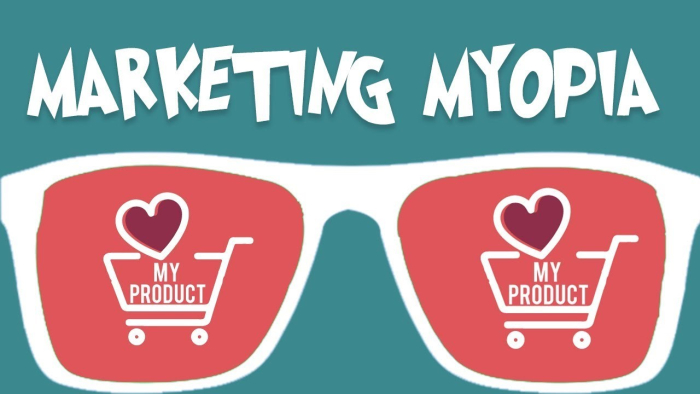
 Data Structure
Data Structure Networking
Networking RDBMS
RDBMS Operating System
Operating System Java
Java MS Excel
MS Excel iOS
iOS HTML
HTML CSS
CSS Android
Android Python
Python C Programming
C Programming C++
C++ C#
C# MongoDB
MongoDB MySQL
MySQL Javascript
Javascript PHP
PHP
- Selected Reading
- UPSC IAS Exams Notes
- Developer's Best Practices
- Questions and Answers
- Effective Resume Writing
- HR Interview Questions
- Computer Glossary
- Who is Who
The Product Concept of Marketing Management
A business exists to maximize profit, serve its customers, and serve society in the best possible manner. Businesses provide products or services to their customers or end consumers for a fee to serve them. This has been the age-old agenda of the business for its survival, although many modifications have been coming by the change in environment and customer expectations. There have been five different marketing concepts that are still relevant. These concepts help us understand the workings of the business and what it aims for.
Marketing Concepts

Marketing, in simple terms, means selling products that satisfy consumers. The five different concepts in marketing are
Production Concept
Product Concept
Selling Concept
The holistic concept or the societal concept
Marketing concept
These concepts help us a lot in understanding how the firm operates and what they are targeting.
Product Concept
In this article, we will delve deep into the product concept of marketing, also known as product myopia.

This concept refers to a situation in which the producer is solely concerned with improving the product's quality. It is in terms of size, technology, colors, packaging of the product, or others. Here, the core belief of the business is that the consumer will buy the good or service only if it is better and will keep buying the better good or service. To make better quality goods or services, improvements can be made as follows,
More appealing than competitors' products
More user-friendly or can provide more customer satisfaction than the earlier version of the product. Here, the product follows the self-competition concept.
A perfect example of this concept in today's era is the new cell phones coming up. Every new handset provides users with more features, better storage, charging capacity, speed, camera quality, connectivity, and others. Mobile phone companies like Samsung, Apple, MI, Google, Realme, Oppo, Vivo, and others have thousands of handsets, and they are coming up with new cell phones every two weeks. Oppo and Vivo, for instance, are focusing on better camera quality, while Apple is focusing on providing consumers with an elite experience. In selling the USP to customers, they compete with their previous version as well as their competitors.
Pros of Product Concept
The product concept of marketing helps the product development itself. This concept provides the following benefits to the people involved in the transaction -
It provides better-quality goods or services to the end consumer.
It helps the consumer satisfy their unknown needs. (Needs they didn't even realize they had) as the seller or producer is constantly researching how the good or service can be more beneficial to the consumer and better than its previous version.
It helps the company stay relevant as they are always improvising and never settling.
Cons of Product Concepts
However, this concept can also be viewed in a negative light. Some pointers include
It seems to be a very narrow-minded approach, as the consumer is now only focusing on how to improve the product. Various factors like the environment, end consumers, and market demands are not considered. The producer is in love with their product and is unable to see the outside world.
It does not consider the end consumer's needs. A product might be brilliantly developed, aesthetically packaged, in an affordable range, and built with the latest technology and still fail. Consumers will only buy a product that will satisfy their needs and will not buy a product just because it is excellent. The product concept fails to focus on the needs of the end consumer
It emphasizes the short-term marketing goal rather than the thriving long-term strategy.
Product concept or marketing myopia also includes the situation with which the producer is obsessed -
With decreasing the price of the product or making the product more and more affordable. paying two hoots to the quality and packaging of the product.
When the only focus is to make the product more and more technologically advanced.
Mass production of the product if consumers will buy it irrespective of the situation.
Working based on personal judgment and opinions instead of market research.
Some well-known examples of product myopia in which the producers ultimately failed miserably due to their narrow approach are

Kodak cameras believed in creating memories and having the pictures on reels or converting them into hard copies. Their only focus was on creating better-quality products that could capture more attention. They took the advent of digital cameras too lightly. For them, it was just a passing breeze, as they believed that customers would always prefer higher-quality cameras and photographs over thousands of photos in their digital storage space. And, this is where they were wrong. They were so much in love with their product that they could not stop it from declining. This led to huge losses. Companies like Canon and Sony thrived with their new products. By the time Kodak decided to enter the market, it was too late, and it had already lost its monopoly too badly.
Nokia phones had a similar graph. The company always believed that customers would prefer mobile phones that would last through generations instead of the frail Android and iOS keypads that kept coming in. These new phones had a lot of new features and issues. When compared to Nokia phones, which continue to work even after being thrown from the 5th floor, these phones rarely lasted less than 5 years. Producers believed that simple technology and high-quality product would keep the company running, but the consumers demanded something more.
Future Marketing Myopias
Hard copies of the books. Customers are now preferring low-cost, always-available, zero-weight devices rather than bulky books or hard copies. Soft copies are more sustainable as well. Hard copies are nearing extinction. A new strategy must be developed by the publishers to beat the soft copies of the books.
OTT platforms are taking over cinemas. The OTT platforms or streaming services have been overrun by youngsters, but this COVID has also brought these services close to adults. Consumers are now habituated to sitting on their comfortable couches and controlling the flow of movies rather than going to cinemas and paying extra money for the tickets and the food. Cinemas have to come up with new offers and technologies to keep them running; otherwise, new movies launching themselves on OTT platforms will be the trend.
Businesses should believe in their products or services, but falling in love with them may not work all the time. In today's era, a holistic marketing approach is what works best. The producers should adapt their products based on the needs of the consumers or society. A business should focus on every aspect of the product and marketing rather than just the product itself. The product's approach will help get many improvisations, but these improvisations should be relevant to society and useful for the customer. This is the perfect mix for a successful business.

